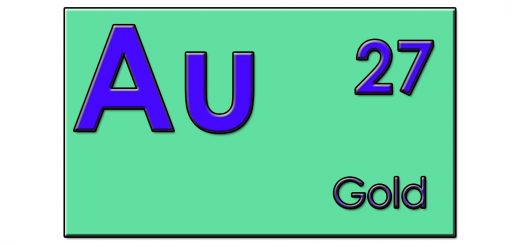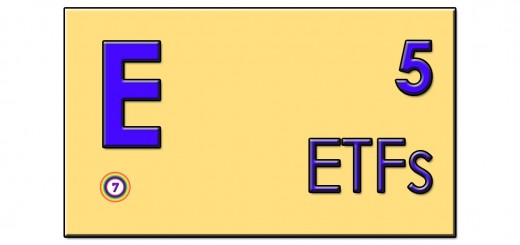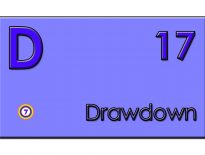Bond Ladder – Elements 9

This post is part of the Elements series, a Periodic Table of all the Investing Elements that you need to take control of your financial life. You can find the rest of the posts here.
Bond Ladder
What is it?
A bond ladder is a portfolio of bonds spaced out over time so as to protect the investor from:
- interest rate risk (through diversification of redemption dates) and
- credit risk (through diversification of issuers).
What kind of element is it?
Bonds Ladders are financial assets that you own.
Who needs it?
This depends on your perspective.
Everybody needs some degree of diversification away from stocks, and for most people, bonds will be the main alternative.
At certain times – such as today, when bonds are at the end of 30-year bull market, and interest rates may be about to rise – bonds may not appear to be so attractive.
Some investors might prefer to hold cash as a useful alternative to bonds.
If you are interested in holding bonds, bond ladders are one of the safest way to approach them.
What comes before it?
Like all investments, you need a plan, a budget and some financial statements.
You’ll also need to pay off your own debts and build up an emergency cash fund.
And since the primary purpose of a bond ladder is to diversify away from equities, you should have already invested in stocks.
What comes after it?
With a portfolio made up of stocks, cash and bonds, you have the basics in place.
You can reduce the volatility of your portfolio still further by adding other asset classes such as Private Equity, Hedge Funds, FX, Gold and other commodities.
The other major asset class to consider is Property, both as a diversifier, and as a place to live.
What age do you need it from?
For your entire investing career, so ideally from age 25.
What age do you need it until?
Until you decide to convert your investment portfolio into the income from an annuity, if you ever do this.
- So not until age 75 at the earliest.
How much does it cost?
How much you will pay for a bond depends on how you buy it.
- UK government bonds (known as gilts) can be bought directly, and very cheaply, from the National Savings and Investments office (NS&I).
- More normally you would buy a bond through a stockbroker, paying the regular commission.
What’s in it?
A bond ladder is a series of bonds spread out through time – each of the bonds in the ladder will mature at a different point in the future.
- You stagger the maturities so that the proceeds can be reinvested at regular intervals.
- Each of the holdings usually has the same weight in the portfolio.
Let’s say that your portfolio is large enough to fit ten bonds (at a deal size where commissions aren’t too painful).
- Then you might decide to hold one bond per year stretching out for 10 years into the future.
- Or you might decide to hold bonds that mature every six months and a ladder that only stretches five years into the future.
These are idealised designs, and your actual ladder will depend on what maturity dates are available from which providers.
- As each bond matures, you use the proceeds to buy a new bond at the far end of the ladder.
- So it’s like a conveyor belt of bonds constantly moving towards you.
Now a brief word about bonds themselves.
A bond is a debt.
- When you buy a bond you are effectively lending money to the firm or government that issued it
- Bonds pay interest (the coupon payment) over a fixed lifetime, usually once or twice a year
- At the end of the bond’s term, it is redeemed and holders get back their capital
- This is the £1 face value paid by the original investors in the bond, not the current market price
Bonds are traded and their prices move in response to two things:
Bond prices are expressed per £100 nominal – a price of 101.25 means that for every £100 nominal, you would pay £101.25
- Bond prices are usually quoted ‘clean’ – without including the accrued interest since the last coupon payment.
- But when an investor buys a bond, they pay the ‘dirty’ price – the clean price plus the accrued interest.
- The accrued interest is paid to compensate the seller for the period during which they have held the bond.
- When the next coupon date rolls around, they will no longer own the bond, and won’t receive the interest from the issuer.
The yield is the rate of return on a bond.
Flat Yield only accounts for the coupon return (the interest), and not any capital gain / loss when the bond is redeemed
- As the price of the bond rises, its yield falls.
The Gross Redemption Yield (GRY – or Yield to Redemption, YTM) takes both coupon payments and capital gain / loss into account.
- It is based on the present value of the cash flows of the bond and is the ‘internal rate of return’ (IRR) of the bond.
- This can also be thought of as the discount rate which, when applied to the future cash flows of the bond, produces the current price.
- The YTM allows investors to make comparisons between bonds with different maturities and coupons, as it is the annual return over the life of the bond.
You can find out more about bonds on this page.
What does a good one look like?
The quality of a bond depends largely on the reliability of the issuer.
- Government bonds are generally of higher quality than company bonds, especially when issued in the currency that the government controls.
The risk that the issuer will default is known as counterparty risk.
- Rating agencies (Moody’s, Fitch and Standard & Poor’s) rate the capacity of borrowers to “meet their financial commitments”.
A bond ladder protects against interest rate and credit risks, and so a good one would be sufficiently spread through time (say 10 years) and well diversified by issuer (say a dozen issuers).
What does a bad one look like?
A “bad” bond will have a low credit rating.
Long duration bonds suffer more from interest rate rises, so in this sense they are “worse” than short-term bonds.
- Against this, longer maturity bonds usually have higher interest rates.
A bad bond ladder would be insufficiently spread through time and not diversified enough by issuer.
Any recommended brands?
For a UK investor, the obvious bonds to buy directly are UK government bonds.
- There are also lots of bonds from UK listed companies.
One option for retail investors is the London Stock Exchange “order book for retail bonds” (ORB).
- Launched in 2010, the ORB aims to make bond investing accessible to private investors.
- It lists a subsection of company and UK government bonds that can be traded through normal stock-brokers in deal sizes appropriate to PIs (£1K to £2K, say).
- In general corporate bonds are aimed at institutions and trade in eg. £50K blocks.
The ORB bonds can be held in an ISA or a SIPP, so the income is tax-free.
In terms of brokers, MoneyWeek had an article in 2015 on the best brokers for bonds in an ISA. They recommended five:
- Hargreaves Lansdown (online dealing available)
- iDealing (online dealing available)
- YouInvest
- iWeb
- X-O
Your broker should charge you the same dealing commission for ORB bonds as he does for stocks.
- This means that deals around £2K could be practical, and a portfolio (the ladder) could be anything from £10 to £50K.
What are the main risks?
Apart from counterparty risk (that the issuer won’t repay – discussed above) bonds have three main risks:
- That inflation will erode the purchasing power of the interest coupon on the bond
- That interest rate rises will make the value of the bond fall, so that the yield to new purchasers of the bond will increase
- A lack of liquidity (liquidity risk), particularly for corporate bonds which are often thinly traded
How do you deal with these risks?
The only way to protect against inflation risk is to buy index-linked bonds.
The only way to protect against liquidity risk is to buy only well-traded issues, though a bond ladder will have fewer liquidity problems than a single bond.
You can protect against interest rate risk and counterparty risk pretty well using a bond ladder.
The bond ladder protects against credit risk through diversification, in the same way that a fund or an ETF would.
- the investor buys ten or a dozen bonds from different issuers in different industry sectors
- this also means that there is a steady stream of interest payments through the year
- a diversified portfolio of bonds will also be less volatile, as with equities
The bond ladder protects against interest-rate risk because you hold the bonds to maturity (until they are redeemed)
- this means that you have a guaranteed return (the yield-to-maturity or YTM) that is known in advance
- there’s also a second effect – only useful if you need to sell the bond ladder early in an emergency – that the spread of maturities in the ladder will lessen the impact of interest-rate changes
Note that since you are reinvesting the proceeds of each maturing bond, there are still long-term impacts from interest rate changes on the prices and yields of the new bonds.
- this can work in your favour when interest rates are rising (bond prices are falling, and yields are going up)
Until next time.
















